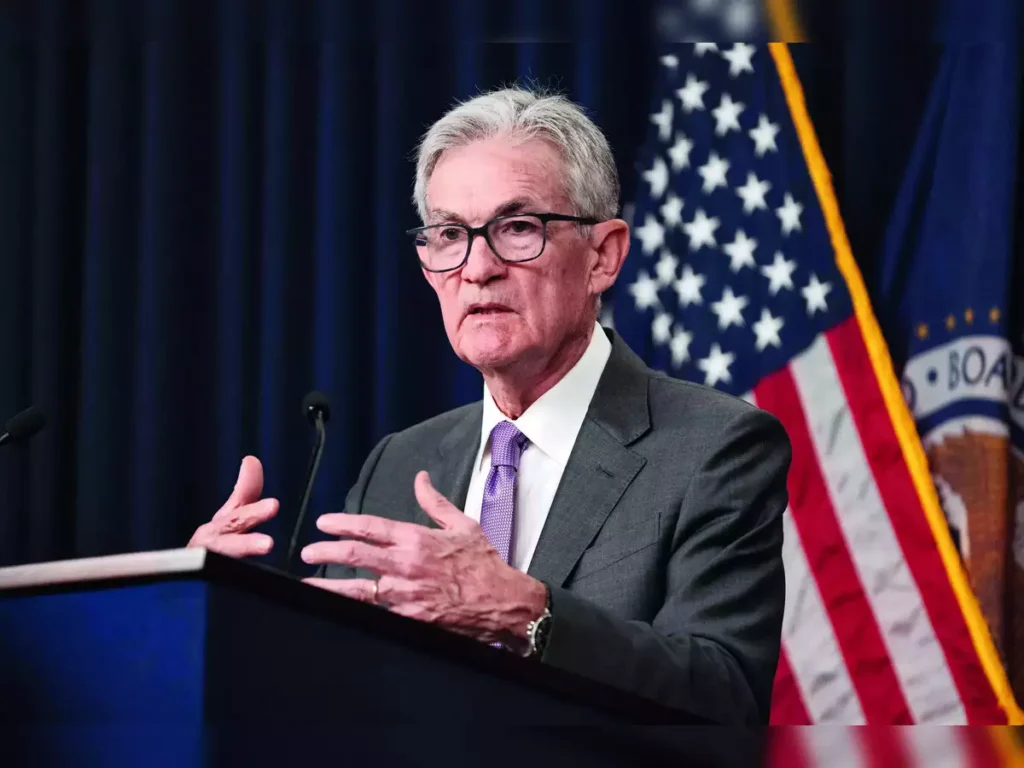The US Federal Reserve has decided to keep interest rates unchanged after its first FOMC meeting of 2025. This decision aligns with market expectations, as the Fed continues to monitor inflation trends, economic growth, and financial stability.
With the benchmark interest rate remaining between 5.25% and 5.50%, investors, businesses, and consumers are now looking for signals on when the Fed might start cutting rates. Let’s break down the latest Fed interest rate decision, its economic impact, and what to expect in the coming months.

Why Did the Fed Keep Interest Rates Unchanged?
The Federal Reserve’s monetary policy is driven by key economic factors, including inflation, employment, and economic growth. Here are the main reasons why the Fed interest rate decision remained unchanged:
1. Inflation is Still Above Target
- While inflation in the US has cooled compared to its peak in 2022-2023, it still remains above the Fed’s 2% target.
- The Consumer Price Index (CPI) and Personal Consumption Expenditures (PCE) Index show that core inflation remains sticky, making the Fed cautious about premature rate cuts.
2. Strong US Economy and Labor Market
- The US economy continues to show resilience, with GDP growth remaining steady.
- Unemployment rates are still low, and the labor market is strong, reducing the need for monetary easing.
3. Stock Market and Financial Stability
- A sudden shift in the Federal Reserve’s policy could lead to unnecessary volatility in stock markets and the bond market.
- The Fed wants to ensure that its decision does not create market instability.
4. No Urgency for Rate Cuts Yet
- Despite market expectations of rate cuts in 2025, the Fed has made it clear that any changes will be data-driven.
- The Fed is waiting for more evidence that inflation is fully under control before considering any policy shift.
Market Reactions to the Fed’s Decision
The Federal Reserve’s interest rate policy has a major impact on financial markets, borrowing costs, and investment strategies. Here’s how different sectors reacted to the Fed interest rate announcement:
1. Stock Market Response
- The S&P 500 and Nasdaq showed mixed reactions following the Fed’s announcement.
- Tech stocks, which typically benefit from lower interest rates, experienced some volatility.
- Banking stocks remained stable, as higher interest rates benefit their profit margins.
2. Bond Market and Treasury Yields
- US Treasury yields remained elevated as bond investors adjusted their expectations for future rate cuts.
- Higher yields make bonds more attractive, impacting equity markets.
3. Mortgage and Housing Market Impact
- With interest rates remaining high, mortgage rates are expected to stay above 6%, making home affordability a challenge for buyers.
- The real estate market may remain sluggish unless the Fed signals an upcoming rate cut.
4. US Dollar and Global Markets
- The US dollar strengthened as investors adjusted their positions based on the Fed’s hawkish stance.
- Emerging markets could face pressure as a stronger dollar makes debt servicing more expensive.
Will the Fed Cut Interest Rates in 2025?
With the US Federal Reserve keeping interest rates unchanged, the big question remains: When will the Fed start cutting rates?
What the Fed is Watching Before Cutting Rates:
- Inflation trends: The Fed wants to see sustained progress in bringing inflation closer to 2%.
- Economic growth: A slowdown in GDP growth could push the Fed to start easing monetary policy.
- Labor market data: If unemployment starts rising, the Fed may consider rate cuts to support job creation.
Many analysts predict that the first rate cut could come in mid-to-late 2025, but this will depend on upcoming inflation reports and economic indicators.
Key Takeaways: Fed Holds Rates Steady in Early 2025
✔ The Fed kept interest rates at 5.25% – 5.50% in its first meeting of 2025.
✔ Inflation remains a concern, preventing immediate rate cuts.
✔ Stock markets reacted cautiously, with tech stocks seeing some volatility.
✔ Bond yields remained high, impacting fixed-income investments.
✔ The real estate market continues to face challenges due to high mortgage rates.
✔ Analysts predict potential rate cuts later in 2025, depending on inflation and economic data.
Final Thoughts
The US Federal Reserve’s decision to keep rates unchanged highlights its cautious approach toward balancing inflation control and economic growth. While many investors were hoping for rate cuts, the Fed has made it clear that policy decisions will be data-driven.
As we move further into 2025, all eyes will be on upcoming inflation reports, job data, and GDP growth to determine the next steps in Federal Reserve monetary policy. Investors and businesses should prepare for a high-rate environment to persist in the near term, while keeping an eye on signals of potential easing later in the year.
